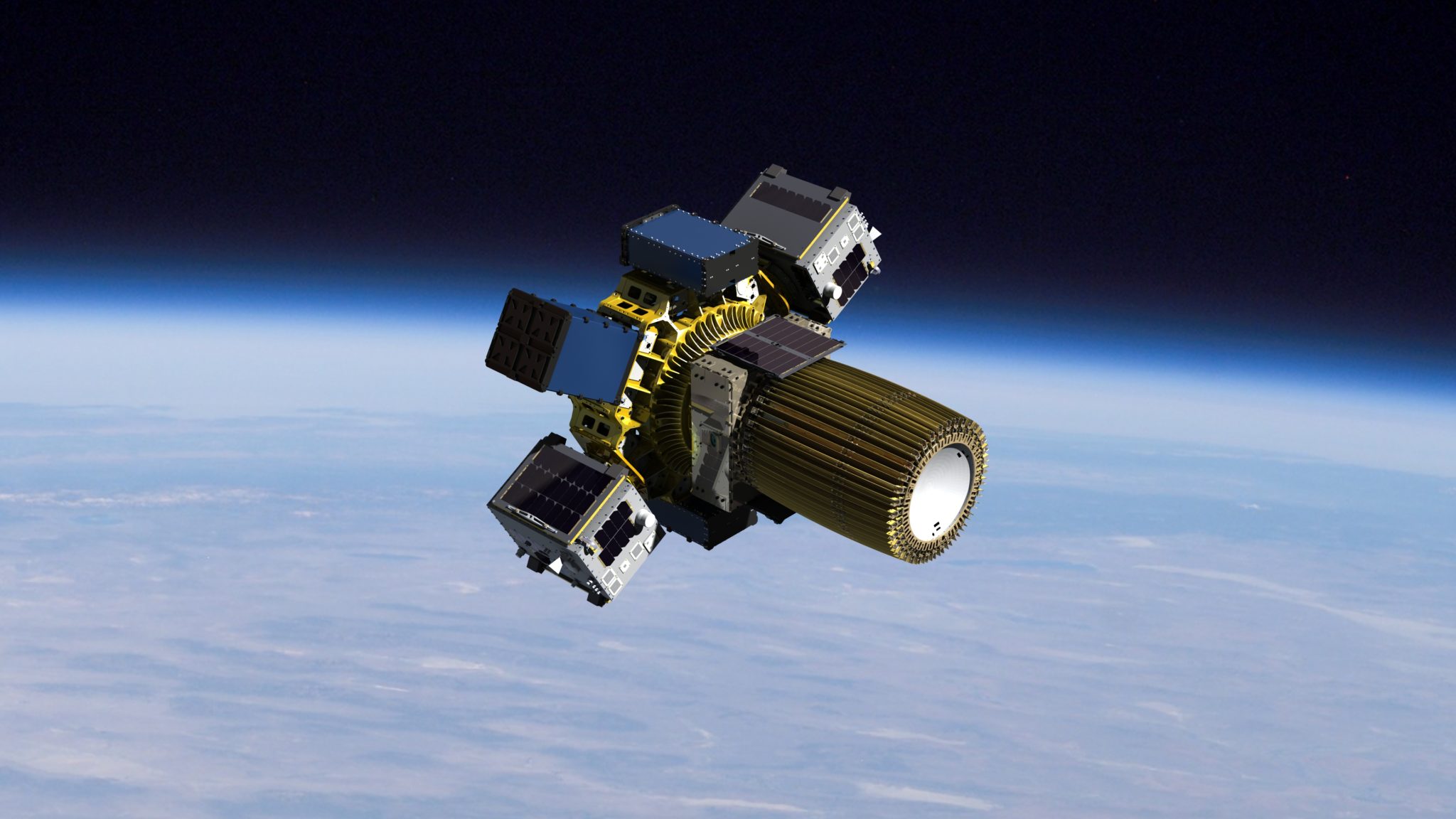Products You May Like
WASHINGTON — Rideshare launch service provider Spaceflight Inc. announced a new version of its Sherpa tug Nov. 12 equipped with electric propulsion that can send smallsats to high orbits or cislunar space.
Spaceflight announced the first flight of its Sherpa-LTE orbital transfer vehicle (OTV) will take place in mid-2021. The vehicle is based on the next-generation Sherpa-FX tug announced in the summer, but equipped with the Apollo Constellation Engine, a Hall effect thruster provided by Apollo Fusion.
With that propulsion system, Sherpa-LTE will be able to generate a change in velocity, or delta-V, of more than 6 kilometers per second. That will allow the vehicle to deliver smallsats to geostationary Earth orbit, cislunar space, or Earth-escape trajectories after a launch into low Earth orbit.
“We’re thrilled to partner with Spaceflight Inc. to provide the significant delta-V required for Sherpa-LTE to deliver their customers to their final orbits in LEO, GEO and beyond,” said Mike Cassidy, chief executive of Apollo Fusion.
“Our goal is to get our customers’ spacecraft delivered to orbit exactly when and where they want it, all the way to their final destination: that last leg of the journey,” said Grant Bonin, senior vice president of business development for Spaceflight, in a company statement. “Our new Sherpa OTVs enable us to provide that in-space delivery service, while keeping costs low and timelines short.”
The Sherpa-LTE is part of a product line that includes the Sherpa-LTC, which has a chemical propulsion system from Benchmark Space Systems. That system generates less delta-V that the Hall effect thruster — about 500 meters per second — but at higher thrust, allowing the vehicle to move payloads to higher orbits more quickly.
Both are based on the Sherpa-FX, which has no propulsion. That vehicle will make its first flight as soon as December on a SpaceX rideshare mission, carrying 14 spacecraft and hosted payloads.
All three vehicles are next-generation versions of the Sherpa vehicles used on the company’s SSO-A dedicated rideshare launch in December 2018, which used two Sherpa vehicles to carry 64 satellites into orbit on a dedicated Falcon 9 mission.
Jeff Roberts, senior director of mission management at Spaceflight, said in a recent interview that the company pursued the next-generation Sherpa to take advantage of SpaceX’s smallsat rideshare program. The tug is designed to maximize the number of satellites that can be deployed from a single port.
Another improvement is telemetry. “We wanted to provide good telemetry to our customers, including separation confirmation,” he said. The tug uses the Globalstar network to provide what he called “near real-time” telemetry, rather than storing data and waiting for a pass over a ground station to transmit it.
Spaceflight is planning as many as five Sherpa missions in 2021, including the first flights of both the LTE and LTC versions. Those are all scheduled for SpaceX launches, but Roberts said the system is designed to be compatible with other launch vehicles.
“We’re planning for about six per year at this point, and we’ll see how the demand actually lands,” he said. “We’ll be able to scale up production of these if the demand is there.”
There is also growth capability for the Sherpa. The “LT” in the designations of the two versions with propulsion stands for “light,” Roberts said. There are plans for medium and heavy versions, he said, although details about those systems have yet to be defined. “Sherpa is a very versatile platform that can be used for many different mission sets, so as the business cases are developed for those, we’ll explore each one.”
